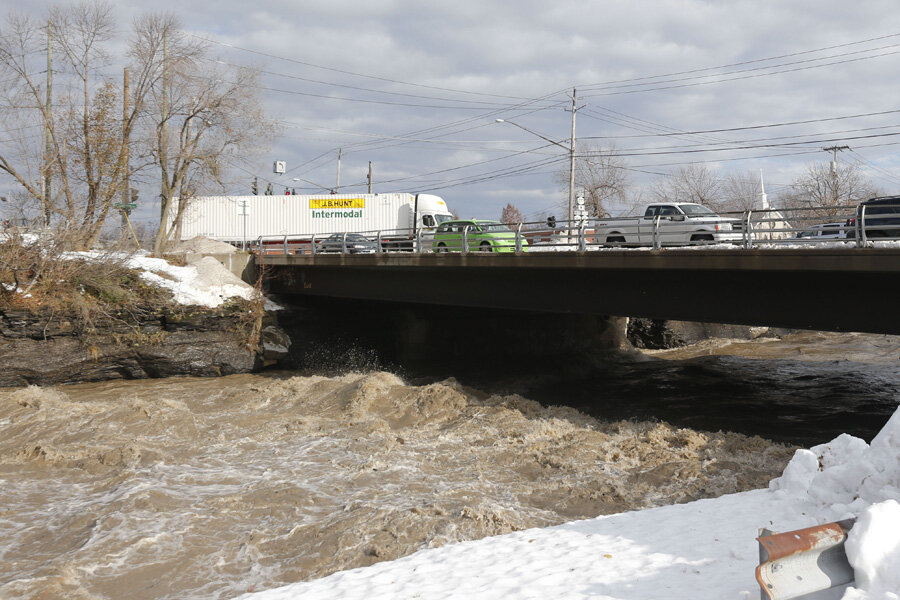Flooding threat in Buffalo eases; wind still an issue
Loading...
| Buffalo, N.Y.
Fears of disastrous flooding from a rapid meltdown of the Buffalo area's 7 feet of snow eased on Monday, but high winds became a menace, threatening to knock down trees and power lines.
Forecasters, meanwhile, defended the National Weather Service following criticism from Gov. Andrew Cuomo, who accused the agency of failing to anticipate how bad Buffalo's epic snowstorm would be.
Cuomo, in the region for a sixth straight day, said state-deployed pumps and sandbags were in place as rain and temperatures over 60 rapidly melted the snow. Residents shoveled snow in T-shirts against the backdrop of white drifts.
By late morning, minor to moderate flooding was reported in several creeks, but nearby homes were largely spared, and the sewers in Buffalo and elsewhere were handling the runoff.
The snowfall across the Buffalo area ranged from less than a foot to about 7½ feet, depending on where the bands of snow coming off Lake Erie hit hardest.
Forecasters said the potential for flooding remained through Wednesday morning.
"As of this moment, the situation is not as problematic as it could have been," Cuomo said a day after advising residents to pack a bag in case they needed to leave their homes. "But again, a question mark until we know fully what Mother Nature holds for us throughout the rest of the day and tomorrow."
The new threat, he said, was wind — gusts up to 65 mph, with the potential to uproot trees from the soggy ground and knock out power needed to operate homeowners' basement sump pumps.
David Fruehauf was out early clearing leaves from a storm drain in front of his house in suburban Orchard Park, and said he would remain vigilant as the snow melted.
"These are the enemies of a sewer," Fruehauf said, kicking at colorful leaves surrounding the drain. "There's still a long ways to go. The (snow) is shrinking, but it's got to have a place to go."
At a news conference, the governor said he hadn't intended to upset forecasters when he said over the weekend that the weather service was "off" on its predictions for the storm.
"It came down earlier than forecasted and it came at a higher volume than they forecasted," he said.
Al Roker of NBC's "Today" show and The Weather Channel's Jim Cantore fired back, defending the weather service's predictions as timely and accurate. In a tweet on Sunday, Roker said the agency's meteorologists "did their jobs."
"Seems like (Cuomo's) folks didn't look" at the forecasts, Roker tweeted.
National Weather Service spokesman Christopher Vaccaro said the snowfall "was very well forecast."
"Nobody should have been caught by surprise," he told The Associated Press.
Most snow-affected school districts remain closed Monday, and at least four called off classes for the entire Thanksgiving week.







